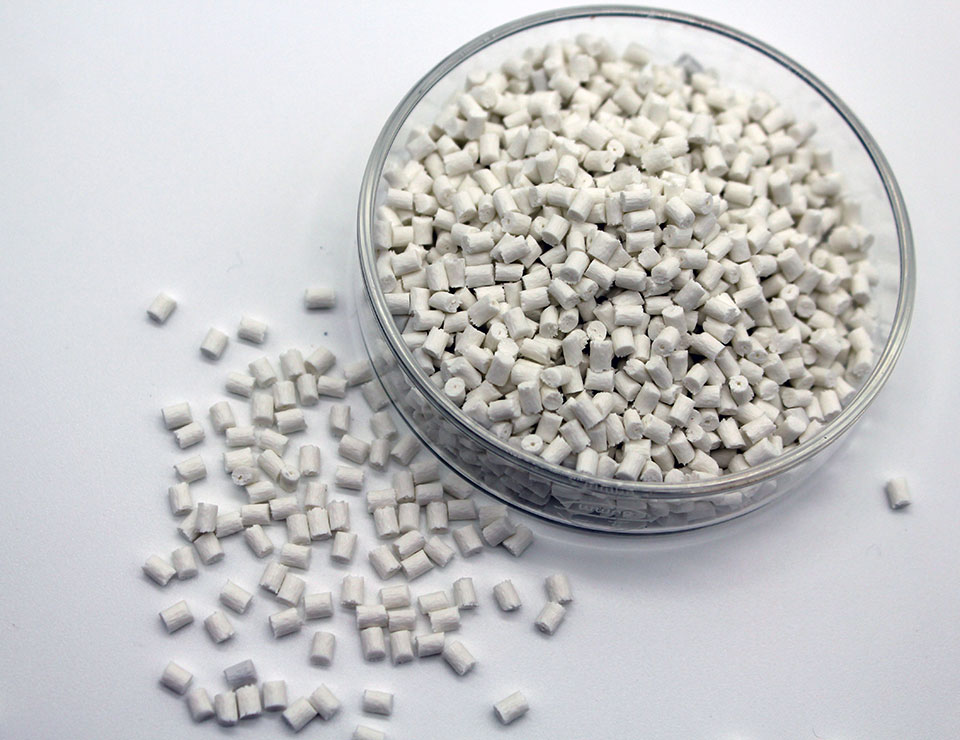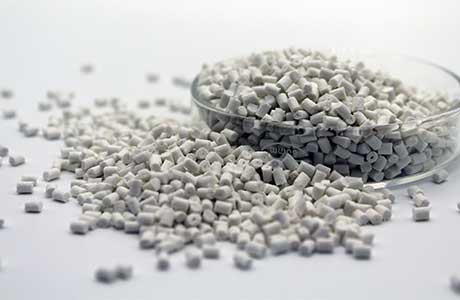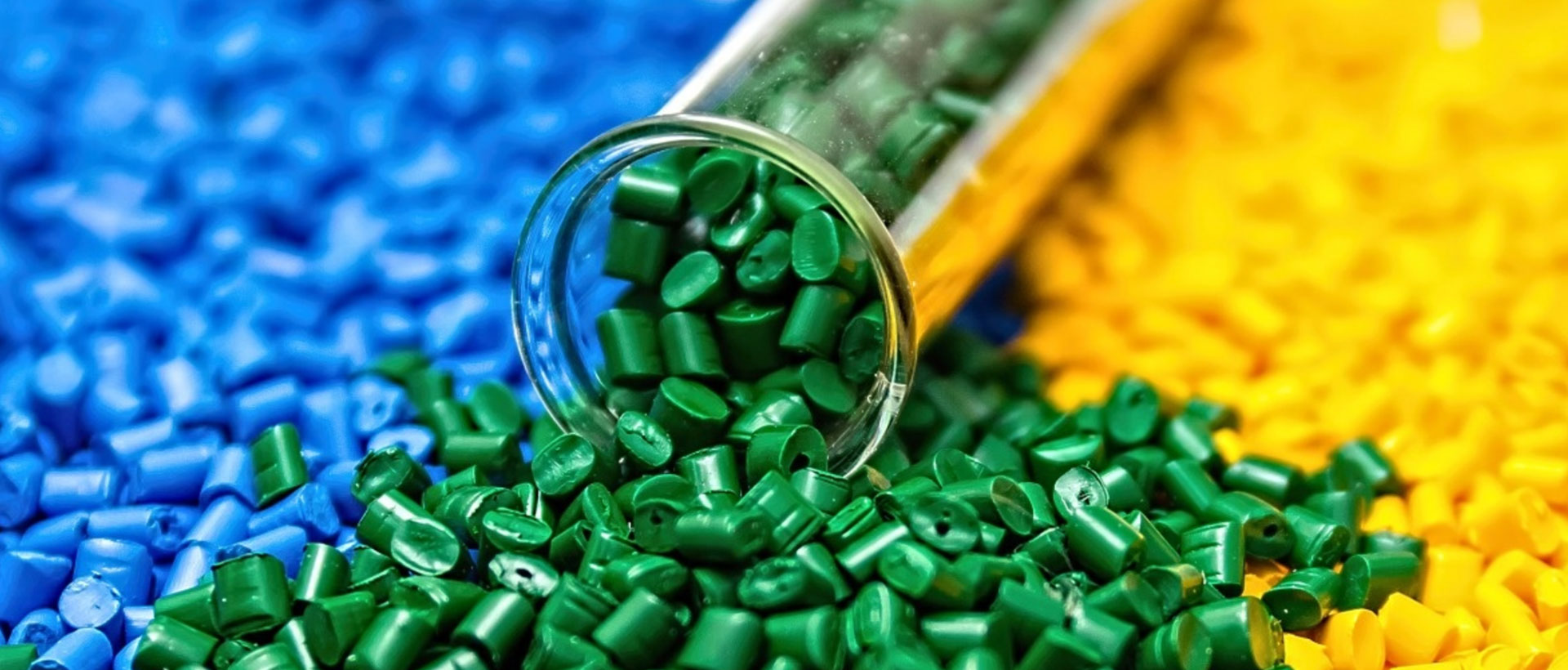Nylon 66 is polyamide 66. The main purpose of Nylon 66 plastic modification is to improve the properties of Nylon 66 material based on the original resin properties to meet specific requirements. The chemical and physical properties of Nylon 66 PA 66 are very similar to Nylon 6, so the modification method is similar. Anmei modified Nylon 66 series includes flame retardant, reinforced, toughened and other modified products.
Nylon 66 plastic modified with the toughening agent has greatly improved Izod impact strength.
Filling modified polyamide 66 can not only reduce molding shrinkage but also improve heat resistance and dimensional stability. The most important is to reduce material costs.
Carbon black can improve the weather resistance of polyamide 66.
As one of the mature nylon 66 suppliers and manufacturers, Anmei provides nylon 66 material at a very competitive polyamide 66 price. Please contact our engineers to develop the best solution for your nylon 66 products.
Nylon 66 plastic is a kind of engineering thermoplastics that can be easily colored and processed. Nylon 66 (PA66) has a higher melting point and slightly higher mechanical properties than nylon 6. Different forms such as Nylon66 PA66 with high tensile strength, Nylon66 PA66 Heat Stabilized, Nylon66 PA66 FR are available in Anmei. Nylon 66 plastic material is known to have excellent chemical resistance. In addition, the polyamide 66 has good mechanical and thermal properties.
Advantages of PA66 Material:
▲High strength, rigidity and toughness in a wide temperature range
▲Excellent wear resistance and self-lubricating properties
▲Excellent resistance to gasoline and lubricating oil such as hydrocarbons, gasoline, oil, weak acid and alkali
▲Good electrical insulation
Limitations of PA66 Material:
▲High water absorption
Easy to lead to the decline of electrical insulation, it must be dried before processing
▲Poor thermal stability
The long-term processing at high temperatures should be avoided
Prior to blending, nylon pa6 6 was dried at 130°C for 3 h to remove most of the absorbed humidity. The composites were prepared by a Coperion twin-screw extruder. The temperature profiles of the barrel were 240-270°C for both the cylinder and the nozzle. The extrudate in the form of a cylindrical rod was subsequently cooled down in the water and then pelletized. The first part of the extrudate was discarded because impurities should be flushed out of the system to ensure product quality of nylon 6.6. The following steps of nylon 66 plastic manufacturing process are sample testing, weighing, labeling and packaging.


In the blending and extrusion of toughened Nylon 66, in addition to the type of toughening agent, the amount of toughening agent and the extrusion temperature, the screw speed is closely related to the notched impact strength and tensile strength of PA66 polyamide composites.

Our production equipment and proprietary technology for PA 6.6 material can not only meet customer product performance requirements but also increase productivity and reduce costs.

Polyamide 66 is the most widely used material in the Nylon family. Nylon66 PA66 and its modified products have been widely used in friction-resistant and abrasion-resistant mechanical parts such as friction discs and gear rotating devices of locomotives. Compared with Nylon 6, Nylon 66 PA66 has a higher melting point, excellent heat resistance, higher elastic modulus, and lower water absorption. Its performance as a molded product is better than PA6 because of the good heat resistance and oil resistance of polyamide 66, which is suitable for the production of mechanical parts around automobile engines and parts of electronic and electrical products that are easily heated.
PA 6.6 material is a translucent or opaque milky white crystalline resin, which is the earliest developed polyamide variety. Nylon 66 PA66 can maintain strong strength and rigidity at higher temperatures and is insoluble in general solvents such as gasoline and lubricating oil.
Nylon 66 PA66 plastic is hygroscopic, the extent of which depends primarily on the composition of the material, wall thickness and environmental conditions. When designing a product, it is important to consider the effect of hygroscopicity on geometric stability. In order to improve the mechanical properties of Nylon 66 PA66, various modifiers are often added, and glass fiber is the most common additive.
Biodegradation refers to the degradation by the action of microorganisms existing in nature such as bacteria, molds, and algae. The ideal biodegradation is one with excellent performance, which can be decomposed by environmental microorganisms after being discarded, and become an integral part of the carbon cycle in nature by being mineralized. Nylon66 PA66 is a non-biodegradable plastic. Currently, polyamide 66 is mainly recycled by waste processing plants. It is subdivided, crushed and granulated to achieve recycling.
Nylon 66, also known as polyhexamethylene adipamide, is a thermoplastic resin, which is generally obtained by polycondensation of nylon-66 salt with adipic acid and hexamethylenediamine. Nylon 66 is insoluble in common solvents, it is only soluble in m-cresol. It has high mechanical strength and hardness and high rigidity, and can be used as engineering plastics, such as gears and lubricating bearings of mechanical accessories, replacing non-ferrous metal materials for machine casings and automobile engines blades.